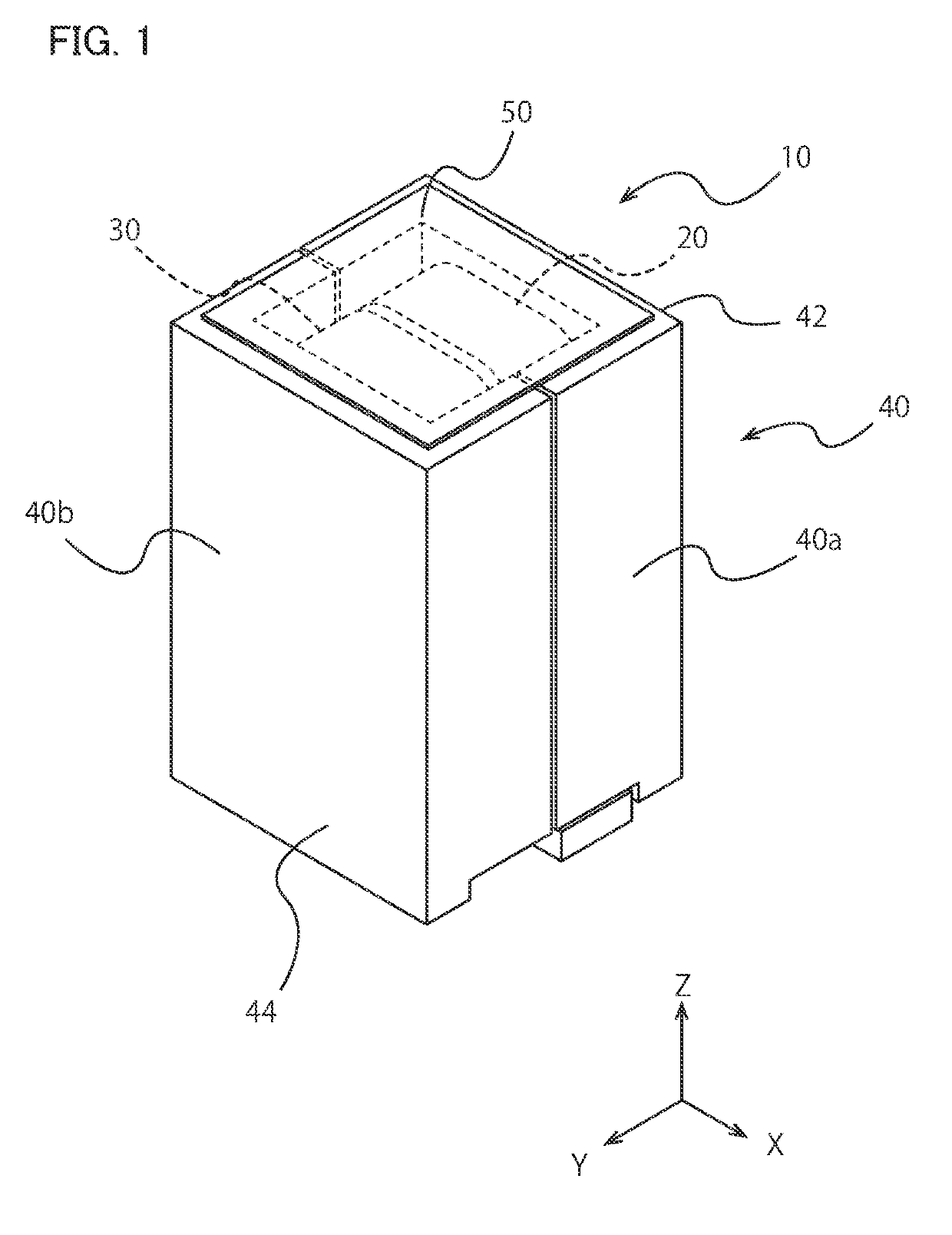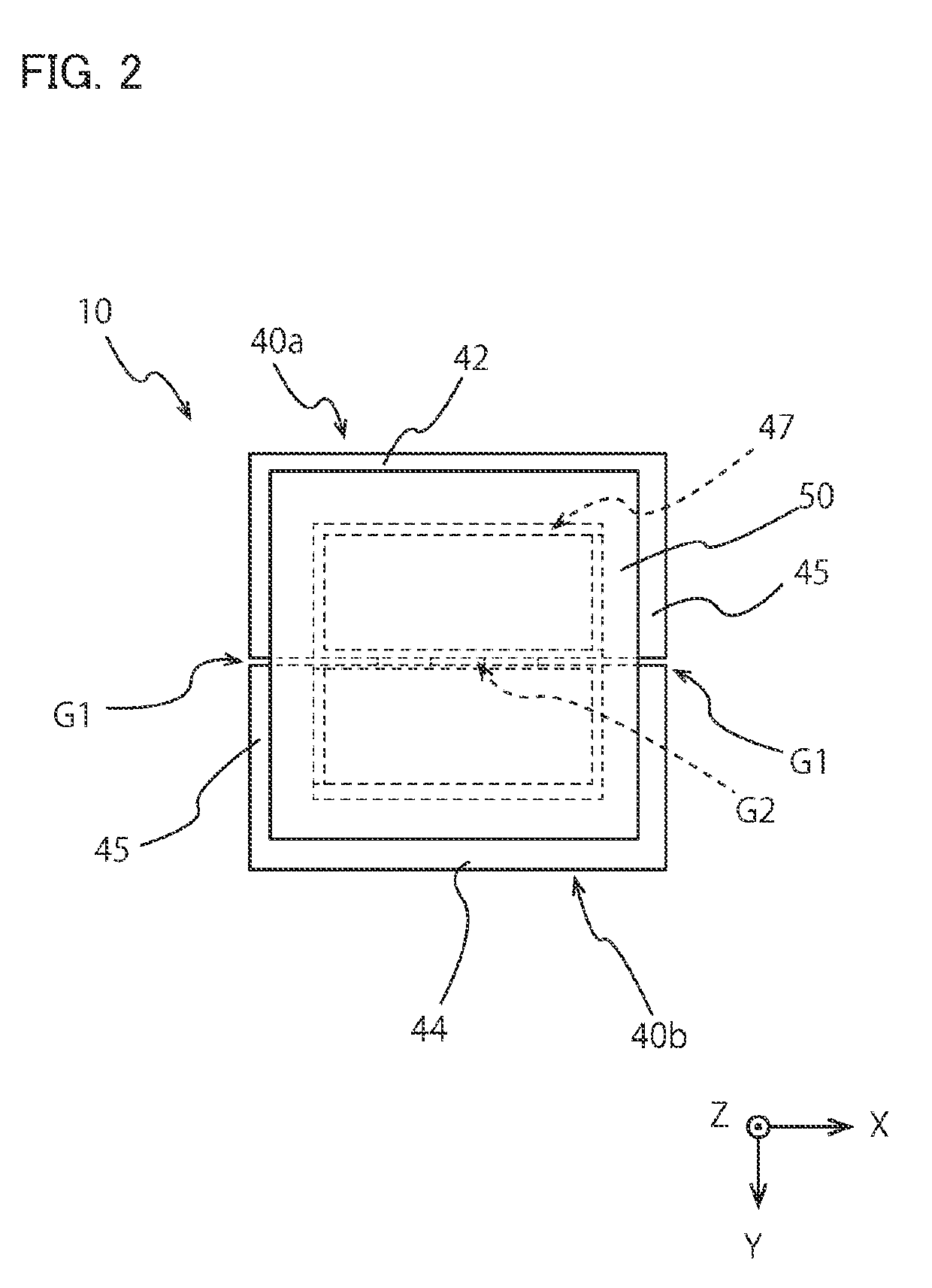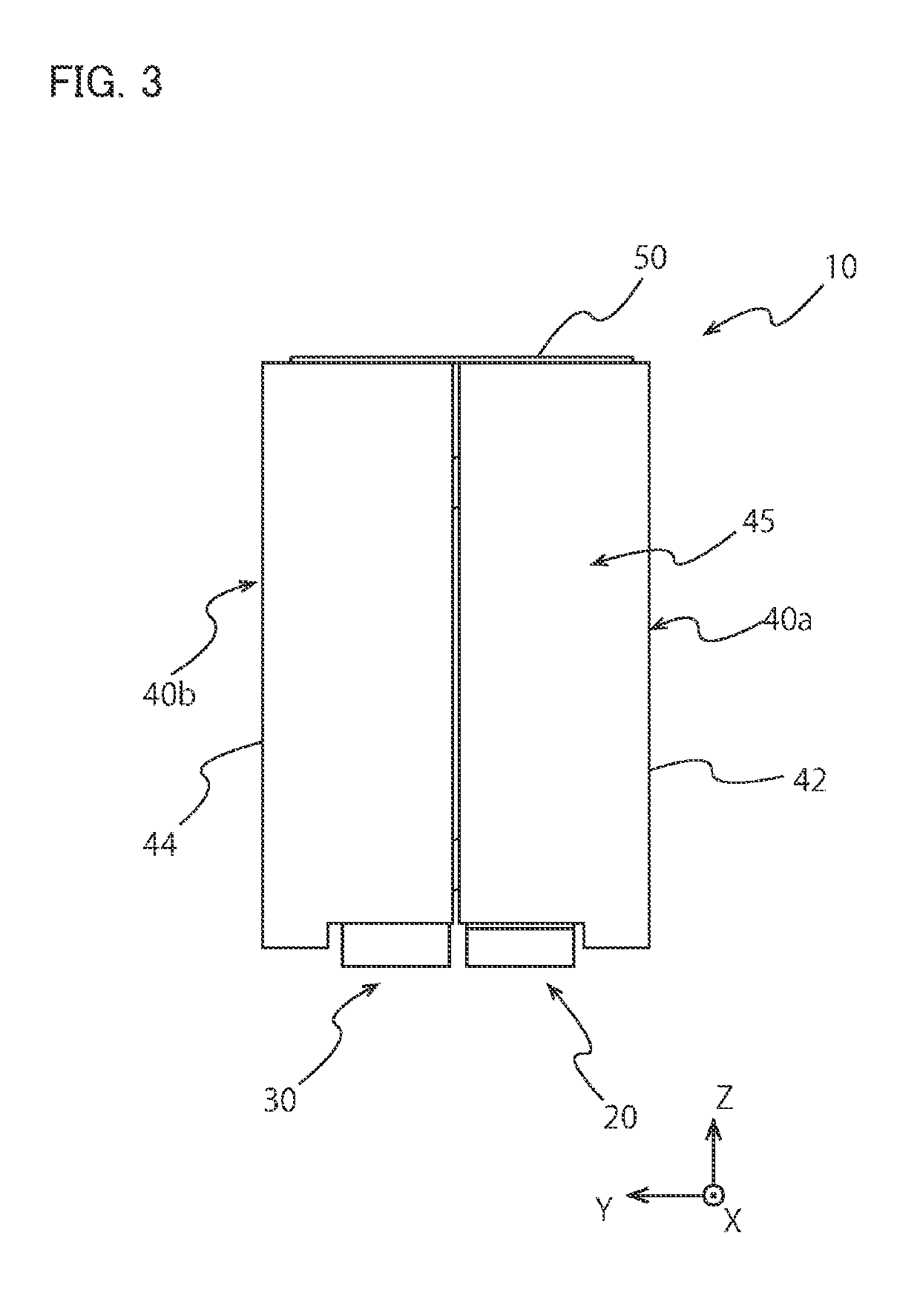Inductor element
a technology of a conductive element and a conductive core, applied in the direction of basic electric elements, inductance with magnetic cores, electrical devices, etc., can solve the problems of downsizing and reducing resistance values, and achieve the effects of reducing resistance values, increasing the density of conductive portions, and favorable mounting strength
- Summary
- Abstract
- Description
- Claims
- Application Information
AI Technical Summary
Benefits of technology
Problems solved by technology
Method used
Image
Examples
first embodiment
[0048]FIG. 1 is a perspective view of an inductor element 10 according to First Embodiment of the present invention from diagonally above. The inductor element 10 has a roughly cuboid outer shape and is used by being mounted on a mount board with a posture where mount surfaces 24a, 26a, 34a, and 36a forming the bottom of the inductor element 10 in the negative side of the Z-axis direction (see FIG. 5) face lands. In the explanation of the inductor element 10, the Z-axis direction is a normal direction of the a mount surface, the X-axis direction is a perpendicular direction to the Z-axis direction and is a parallel direction to first and second side-wall portions 42 and 44 of a magnetic core 40, and the Y-axis direction is a perpendicular direction to the Z-axis direction and is a normal direction of the first and second side-wall portions 42 and 44 of the magnetic core 40.
[0049]As shown in FIG. 1, the inductor element 10 includes the magnetic core 40 and first and second conductive...
second embodiment
[0079]FIG. 11 is an exterior view of an inductor element 110 according to Second Embodiment of the present invention. The inductor element 110 is similar to the inductor element 10 shown in FIG. 1 except that no upper opening is formed in a magnetic core 140, and that first and second conductive portions 120 and 130 housed in the magnetic core 140 have different detailed shape. Thus, the inductor element 110 is explained in terms of only differences from the inductor element 10 and is not explained in terms of common matters with the inductor element 10.
[0080]As shown in FIG. 11, the magnetic core 140 of the inductor element 110 is formed by combining first and second core portions 140a and 140b (different members). As shown in FIG. 11 and FIG. 12, side circumferential portions 145 connect a first side-wall portion 142 of the first core portion 140a and a second side-wall portion 144 of the second core portion 140b at both sides of the magnetic core 140 in the X-axis direction and a...
PUM
| Property | Measurement | Unit |
|---|---|---|
| length | aaaaa | aaaaa |
| cross-sectional area | aaaaa | aaaaa |
| conductive | aaaaa | aaaaa |
Abstract
Description
Claims
Application Information
 Login to View More
Login to View More - R&D
- Intellectual Property
- Life Sciences
- Materials
- Tech Scout
- Unparalleled Data Quality
- Higher Quality Content
- 60% Fewer Hallucinations
Browse by: Latest US Patents, China's latest patents, Technical Efficacy Thesaurus, Application Domain, Technology Topic, Popular Technical Reports.
© 2025 PatSnap. All rights reserved.Legal|Privacy policy|Modern Slavery Act Transparency Statement|Sitemap|About US| Contact US: help@patsnap.com



